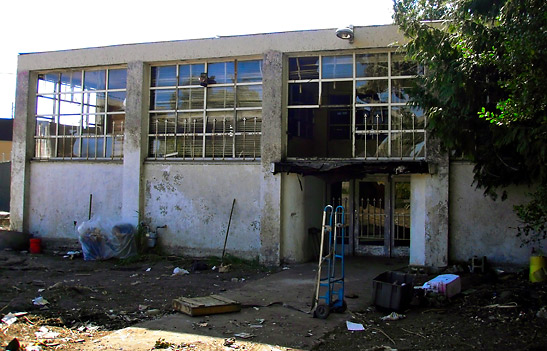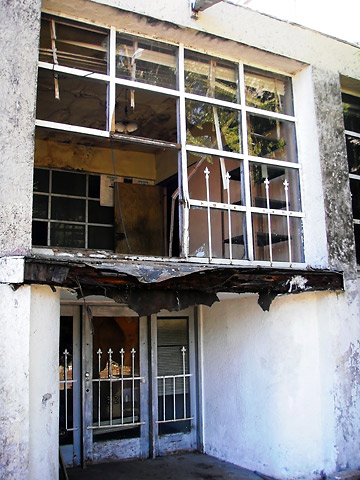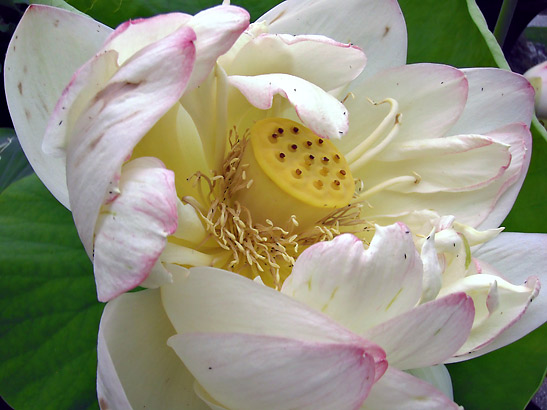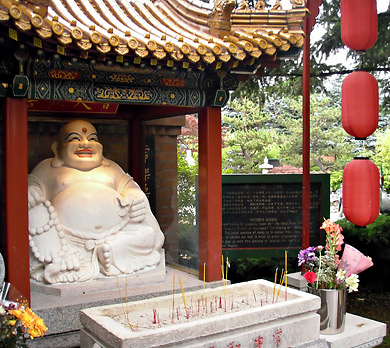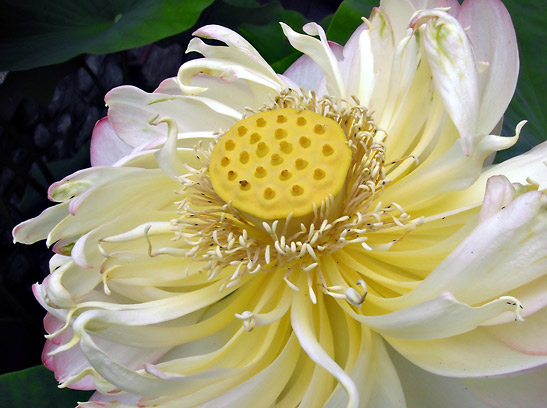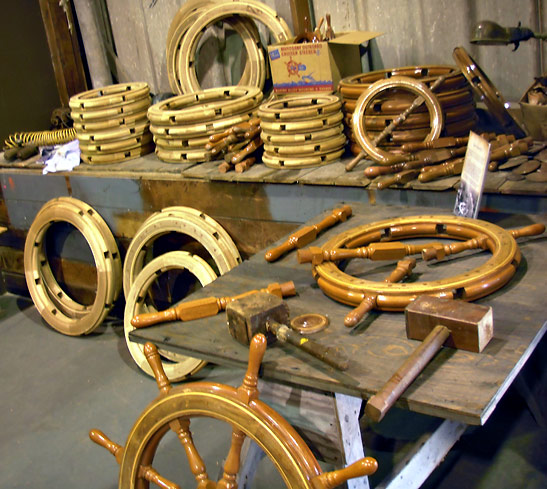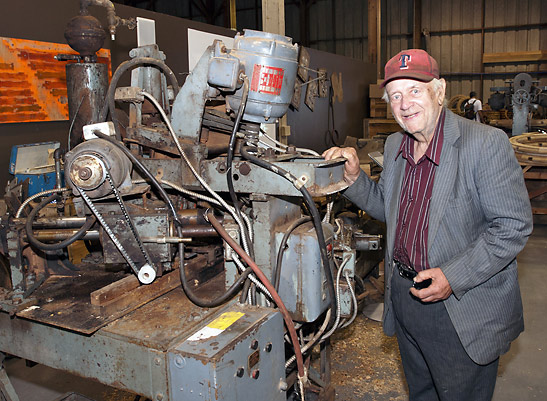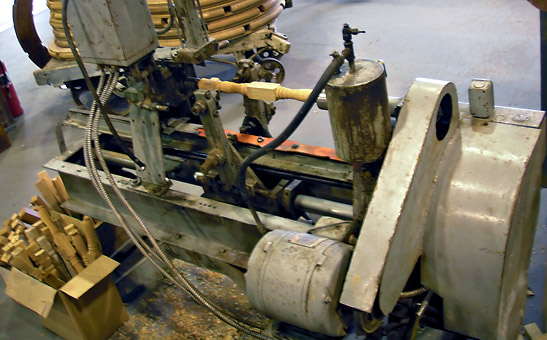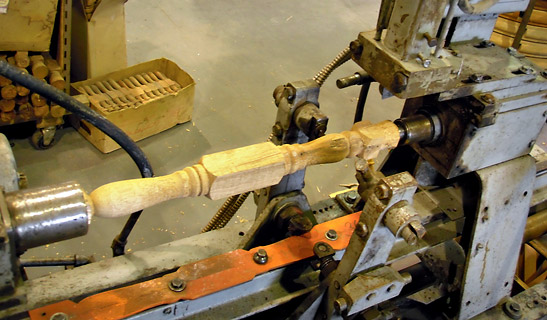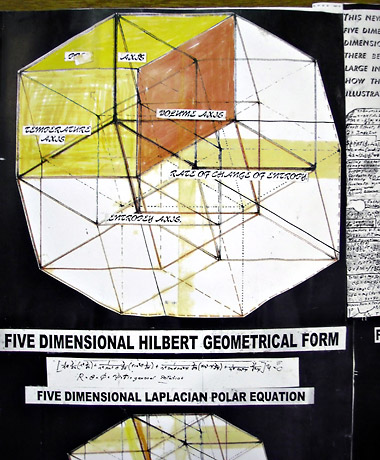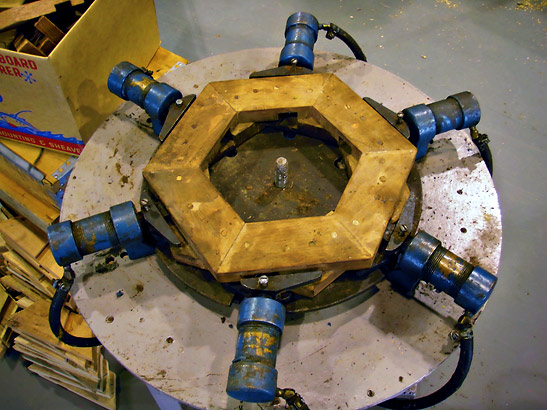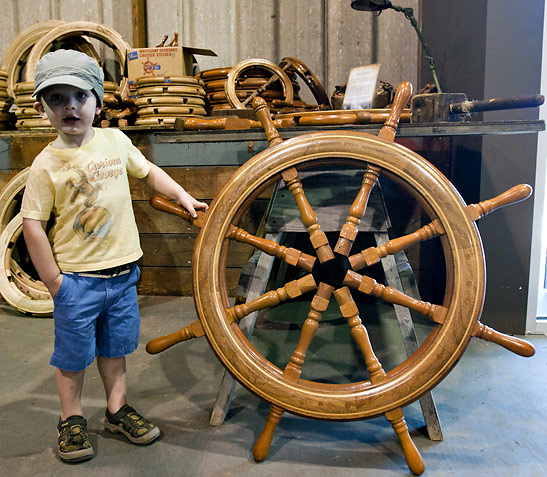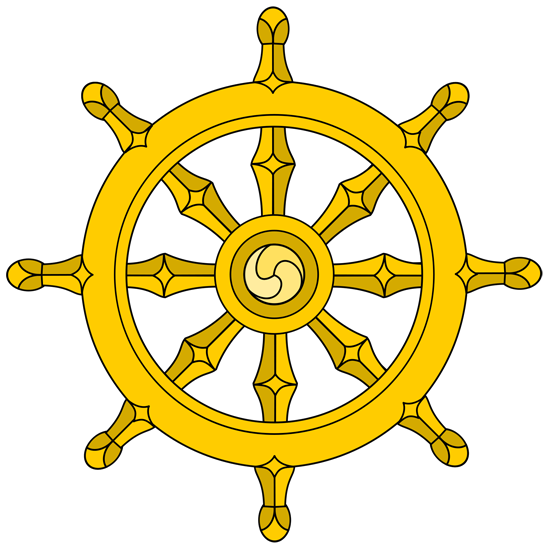 |
 |
|
 |

|
Richmond, British
Columbia:
Where Buddhism Meets Quantum Physics Story and Photos by Gary Singh Oh, East is East, and West is West, and never the twain shall
meet
It is here that I’m standing at a rundown, abandoned two-story warehouse at 3211 No. 3 Road. The building looks gutted, as if a fire recently whipped through the entire structure.
The upper story windows are mostly gone. Roll up doors on the ground level are wide open. Shattered glass and pieces of industrial machinery lay strewn about the property. Concrete bricks are piled on the side of the place, where multiple tire tracks reveal recent activity. I have no idea what this place is about, but I am intrigued. Something about this half-destroyed edifice speaks to me. I ask people—pedestrians, a store clerk, the concierge at my hotel—but no one seems to know what happened here. It is a mystery. From the Wreckage a Lotus Blooms At the International Buddhist Temple on Steveston Highway, I am staring at one of the few authentic lotus plants in the entire country of Canada. Actually, quite a few of them are planted here at the temple. They normally don’t grow in Canada, explains Apui Lam, my tour guide. He wears an orange employee vest with the temple’s name in Chinese characters. As a whole, temple complex somewhat resembles the Forbidden City in Beijing.
The temple is over 25 years old and every tiny little architectural detail is designed according to the traditional Chinese imperial style. Throughout the complex, there are numerous gardens, courtyards, murals and statues. Chinese Buddhist perspectives influence all of the horticulture. The Venerable Guan Cheng, the Abbot of the temple, designed much of the flower arrangements himself over the course of many years. Aromas of incense meander in and out of the scenery, as Lam guides me through the various landscapes. Other visitors are purchasing incense from vendors and then leaving the sticks as a blessing. It is an unusually cloudless day in the greater Vancouver area. The morning sun begins to warm the environs. Little children scamper about the temple grounds.
Lam takes me through most of the outdoor garden areas and then to the Gracious Temple, a few halls, the lunch area and several other buildings. In a thick Chinese accent—and I didn’t even know this was coming—he explains the Buddhist concepts of Dependent Arising and Emptiness. No phenomenon or object, he says, exists all by itself, independently. All things arise from causes and conditions. An example would be a flower, in the sense that its existence arises due to its roots, the soil, the earth, the moisture and everything that combines to create the flower. The flower itself is empty of any intrinsic, autonomous, built-in existence. In fact, the more you zoom in, or zoom out, all things are empty of intrinsic, autonomous, built-in existence. All beings and phenomena depend on other beings and phenomena. Reality is a system of phenomena connected with each other, a web of cause-and-effect relationships. After the tour, and on my way back to the car, I stop to observe the lotuses as they bloom. In the hour we’ve been walking around the temple, the petals seem to have opened up considerably.
Quantumly Entangled Not too far away, the Richmond Maritime Festival erupts each year at the Britannia Heritage Shipyard, a national historic site preserving components of West Coast marine history in an open-air, park-like setting. An authentic representation of what a fishing village once looked like, replete with canneries, boat yards, stilt-houses and stores, the site tells the stories of multi-ethnic residents through exhibits, tours and activities. Located on the waterfront amidst half-crumbling boardwalks and dilapidated wooden buildings, the site allows one to scope out the restoration of working wooden boats or learn the ins and outs of what life in a fishing village was like 100s year ago. As I enter the Seine Net Loft, I gawk in amazement at what’s easily the main attraction of the Maritime Festival this year: industrial machines and artifacts from the now-defunct Marine Products Company, an outfit Jack Lubzinski cofounded and operated. For over 50 years in Richmond, beginning in 1951, his company custom-built wooden steering wheels for ships. This display intends to show what his factory actually looked like when it was operational.
But the story is much deeper. Lubzinski, a physicist, miraculously designed and built all of the industrial machines just to manufacture these ship wheels. He didn’t just make the wheels, he built the machines that made the wheels. He even cast his own bronze for the wheel hubs. Completely awestruck, I hang out for at least an hour, just to look at these elaborate multipurpose proprietary machines. There’s a pneumatic clamp, a triple drill press, a shaper, a sander, a buffer and a monster dual saw/planer combo. Piles and piles of ship wheels in various states of the manufacturing process lay strewn about the building. People are lining up outside to get in. Lubzinski himself is present. Now 89, he resembles what I expect a legitimate genius to look like. Seemingly disheveled, he wears a rumpled and oversized sportcoat and pants, he has holes in his shoes and his baseball cap looks decades old. But he is outgoing, talkative and sharp as a tack. He speaks with visitors about WWII, quantum mechanics, atoms, thermodynamics and the history of the fishing industry in British Columbia.
Other visitors congregate around him. One of his old professors rolls in. More oldtimers and retired folks who apparently knew Lubzinski decades ago begin milling about. Former employees of Marine Products Company also make themselves known amongst the onlookers. Families from other parts of the festival show up to witness the dazzling display of machines. A film on the far wall depicts each stage of the wheel-making process.
Again, Jack actually custom-built all these machines just to make ship wheels. The old guy is a genius, I think again. There’s no doubt. Before I have any chance to ask questions, though, Jack moves off to the other side of the warehouse where he tacks a huge display to the far wall. It looks like he’s glued a few dozen 8x11 pages together to make a giant three-foot by three-foot panel and attached it to some construction paper. It has nothing to do with the ship wheels or the Marine Products Company. Instead, it’s a homemade poster displaying his current research into five-dimensional Hilbert Space. Evidently, this is what Jack does in his spare time now that he’s retired.
People continue to mill about, in sheer awe of the machines and the piles of ship wheels. The film projected on the wall continues to play over and over. As I contemplate the scene, I overhear Jack talking with a visitor about quantum mechanics and how atoms are 99.9 percent empty space. If two solid objects are pressed against each other, he says, it’s only an illusion that they actually touch. If you could zoom in close enough, you’d see there’s something similar to a magnetic force actually holding the two objects close together. Everything is almost entirely empty space. The conversation turns into one of electrons, mind, matter and the interrelations of objects and phenomena. What I hear shares common ground with the explanation I remember from Apui Lam at the temple—the Buddhist concepts of emptiness and dependent arising. Something to do with systems of interacting objects, systems that cannot be represented by either-or schemes, how nothing arises or exists independently by itself. I cannot explain quantum theory, but quite a few others have navigated these parts before, especially Victor Mansfield in his book, Tibetan Buddhism and Modern Physics: Toward a Union of Love and Knowledge. He even compares Hilbert Space with Buddhist perspectives. In fact, here in Richmond, I should have used that book as my travel guide. What an idea.
As I take one last look at the industrial machines, the piles of ship wheels in various stages of completion and the display placards everywhere, only then do I spot a placard I hadn’t yet seen. This one displays a photo of Jack’s original Marine Products Company warehouse, the building where all these machines originally sat, the structure at 3211 No. 3 Road in Richmond. It’s the same building I stumbled into earlier, the one now gutted, the same abandoned building I couldn’t get anyone to identify.
The city of Richmond, BC, is a system of interactions between eastern and western phenomena. I didn’t intend to experience Buddhism and western physics on this trip. They just emerged. But I find this to be the very purpose of travel—to increase awareness and elicit connections. And, of course, the universal symbol of Buddhism is the Dharma Wheel, often depicted as—drum roll, please—a ship’s steering wheel.
Related articles: |
|
Your tea adventures are especially interesting because I've always associated tea with British etiquette or a bevy of women wearing dainty victorian costumes and sipping tea with their little pinky sticking out. To see Tea from a man's perspective brings new light in a man's psyche. I've been among the many silent admirers of your writings for a long time here at Traveling Boy. Thanks for your very interesting perspectives about your travels. Keep it up! --- Rodger, B. of Whittier, CA, USA
|
This site is designed and maintained by WYNK Marketing. Send all technical issues to: support@wynkmarketing.com

|











